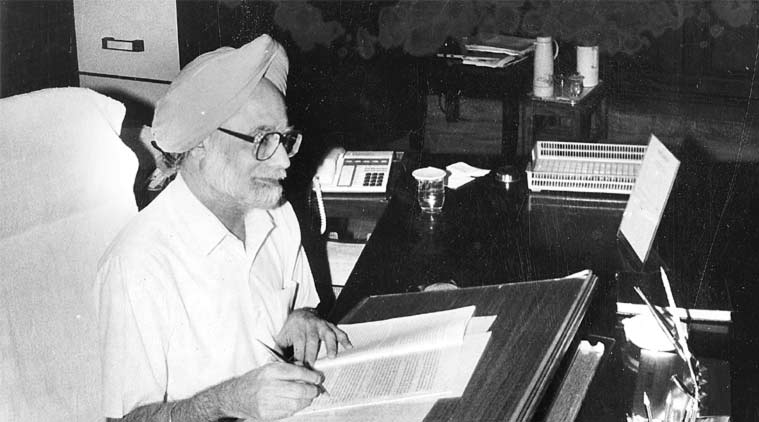The year 1991 saw a sea change in the industrial policy that had governed the country’s economic development for decades. This watershed moment in India’s economic history occurred in the shape of the 1991 industrial policy, which ushered in a new era by enforcing a completely open economic system in contrast to the prior mixed one. The country chose to adopt capitalism’s principles.
Features of the New Industrial Policy
The 1991 New Industrial Policy is at the center of the economic reforms that began in the early 1990s. All subsequent reform efforts stemmed from the new industrial policy. The Policy has resulted in significant changes to the country’s economic regulation. As the name implies, these reforms targeted several aspects of the industrial sector.
The public sector’s role has been redefined as part of the policy. Under the NIP 1991, dedicated reform programs for the public sector, including the disinvestment program, were initiated. Major industries that were formerly exclusively for the public sector have found a home in the private sector.
Foreign investment, likewise, has been welcomed under the policy. However, the most significant reform step of the new industrial strategy was the abolition of India’s industrial licensing system. Industrial licensing exemplified bureaucracy. Due to the magnitude of the changes, the 1991 Industrial Strategy, or new industrial program, constitutes a significant departure from the early 1956 policy.
The new policy included reform directions, and thus for LPG (Liberalisation, Privatisation, and Globalisation). It expanded private sector participation to practically all industrial sectors, with the exception of three (modified). Simultaneously, the strategy has encouraged international investment and technological transfer. Since 1991, the country’s foreign investment policy has been gradually evolving through the phased introduction of liberalization measures.

Perhaps the most significant change brought about by the new industrial policy was the repeal of industrial licensing. Industrial licensing was restricted to fewer than fifteen categories under the 1991 policy. This means that in order to begin an enterprise, one must apply for a license and wait only in the case of a few carefully selected industries. This effectively ended the country’s era of license raj or red tape. The 1991 industrial policy laid the groundwork for the country’s subsequent liberalization, privatization, and globalization efforts. The policy has brought changes in the following aspects of industrial regulation:
- Industrial delicensing
- Deregulation of the industrial sector
- Public sector policy (de-reservation and reform of PSEs)
- Abolition of MRTP Act
- Foreign investment policy and foreign technology policy.
Industrial delicensing policy or the end of Red Tapism
The most significant aspect of the 1991 new industrial strategy was the abolition of industrial licensing, sometimes known as license raj or red tape. Industrial licensing rules require private sector enterprises to get licenses prior to establishing an industry. This has resulted in lengthy delays in the establishment of new industries. The industrial strategy of 1991 came dangerously close to abolishing the system of industrial licensing. It has halved the number of industries that require licensing to fifteen. Only 13 sectors require permits to begin industrial operations.
Dereservation of the industrial sector
Historically, the public sector has expressed objections, particularly in capital goods and critical industries. Industrial deregulation also opened up the majority of industrial sectors to the private sector. Historically, the majority of industrial sectors have been kept for the public sector. Only three sectors—atomic energy, mining, and railways—will remain public sector-reserved under the new industrial policy. All other industries have been made available to the private sector.
Reforms in public sector enterprises
Reforms in the public sector attempt to increase the sector’s efficiency and competitiveness. The government designated strategic and priority sectors in which the public sector should focus its efforts. Similarly, loss-making PSUs were privatized. The government has implemented a disinvestment policy in order to restructure the country’s public sector. Simultaneously, autonomy has been granted to PSU boards to ensure efficient operation.
Foreign investment policy
Another significant aspect of the economic reform program was that it encouraged foreign investment and technology transfer. This move boosted industry rivalry and strengthened the country’s business environment. Foreign investment was permitted, including FDI and FPI. Similarly, the country has created loan capital to attract foreign investors.
Abolition of MRTP Act
The Monopoly and Restricted Trade Practices Act was repealed in 1991 as part of the New Industrial Policy. In 2010, the Competition Commission established itself as the watchdog for economic competition. The 1991 industrial policy is the most significant reform to the Indian economy since independence. Significant changes occurred as a result of the strategy, including the emergence of a robust and competitive private sector and a substantial number of foreign enterprises in India.
Abolition of Phased Manufacturing Programs for New Projects
Phased manufacturing programs have been in place in a number of engineering and electronic industries in order to accelerate the pace of indigenization in the manufacturing sector. The new policy effectively eliminated such projects in the future.
Removal of Mandatory Convertible Clause
Due to the fact that a large portion of industrial investment in India is financed through loans from banks and financial institutions, these institutions have been required to include a convertibility clause in their lending operations for new projects, allowing them to convert a portion of their loans into equity as needed by their management. This has been viewed as an unreasonable threat of financial institutions acquiring private enterprises. As a result, the new industrial policy requires financial institutions to refrain from imposing this required convertible provision.
Conclusion
As a result of the preceding debate, it can be stated that previous to independence during the colonial period, the British Government entirely shaped both industrial and economic policies in favor of British interests. Immediately after independence, India enacted an industrial strategy in 1948 that emphasized a mixed economic system approach in which the public and private sectors coexisted, but ground realities compelled the country to adopt a new industrial policy within a short period of time.
The 1956 industrial policy resolution established a framework for the development of centrally controlled enterprises, state-controlled industries, and joint ventures. The policy resolution proposed liberalizing industrial policy through amendments to the MRTP and FERA Acts, redefining investment limits, de-licensing, and exemptions for similar categories of the industrial sector, export promotion incentives, broad banding of industries, and the introduction of cottage industries, among other financial concessions.
Following the 1956 industrial policy resolution, the industrial policies of 1973, 1977, 1980, 1982–83, and 1990 were implemented with very minimal modifications. With the inauguration of the Narsimha Rao government in 1991, the industrial policy concept came full circle with the introduction of the New Industrial Policy of 1991.
The country chose to adopt capitalism’s principles. Deregulation, de-licensing, de-control, and de-bureaucratization of the industrial licensing system were among the first measures implemented under the New Industrial Policy. Two, liberalization of foreign commerce and currency operations; and three, the implementation of many steps to stimulate inflows of foreign direct investment. All of these initiatives began in 1991, and since then, additional liberalization has been added with each new budget.

